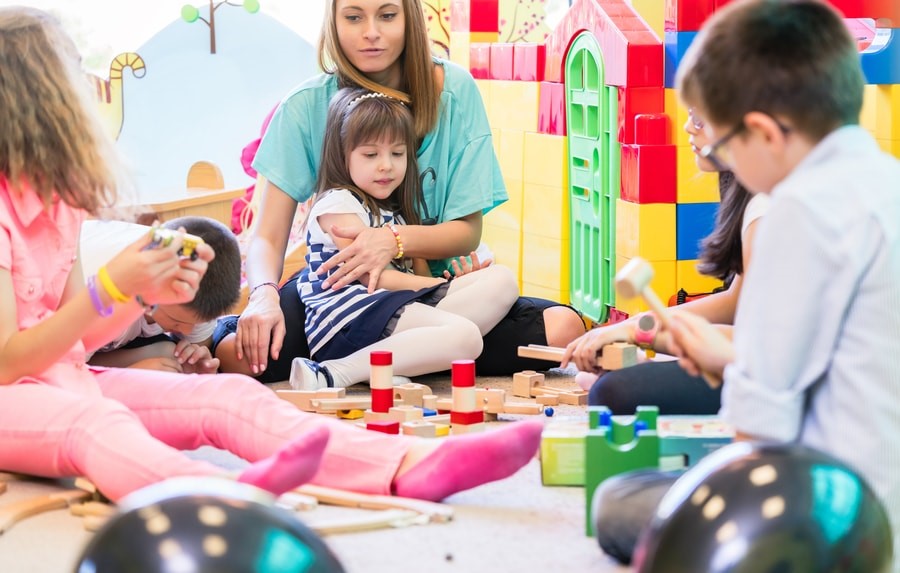- 855.224.8655
- Schedule a Tour

As a teacher, you understand that each child brings his or her own personality to your classroom. After all, it’s what makes your classroom community so unique and special. A big part of personality includes temperament, as it can impact how children learn.
Different temperaments can sometimes require creativity on your part as an early childhood educator, especially for those children who may be slow to warm up. Read on to learn more about how to manage your class while addressing children’s needs.
Understanding Temperament
While a child’s personality can develop as he or she grows and matures, temperament tends to present early in infancy. Temperament refers to how a child responds to people and situations. There are three main types of temperament:
- Active: A child who often has a lot of energy and high levels of motor activity and engagement.
- Easy-going: A child who may be more “go with the flow” and is generally upbeat and confident.
- Slow to warm: A child who may need extra time to adjust to new situations or with new people; may prefer to sit and watch rather than participate.
The important thing to remember is that it takes all kinds of children to balance out your classroom, and no one type of temperament is better or worse than another. Don’t use temperaments as labels; rather, use them as tools to better understand each child and how you can modify your teaching approach.
Accommodating Temperaments in Your Classroom
Different temperaments may require that when appropriate, you adjust your teaching style to accommodate their temperaments. This is called goodness of fit. When recognizing temperaments in children, you should also be aware of your own temperament. It may help to evaluate how your temperament influences your teaching style, and if you need to make any adjustments.
In addition, here are three tips to help children who are slow to warm feel comfortable in your classroom.
Give Them Time to Adjust
Focus on helping slow-to-warm children adapt at a comfortable pace. They may warm up in their own time, or they may need direction and routine to help them adapt to new experiences and activities. Validate their feelings and find ways to engage them without overstimulating them or forcing them to participate.
A good example of providing time to adjust often takes place during the first days of school. Slow-to-warm children may take a longer time to adapt to a new school or classroom.
When parents come to tour with their children and you observe that they may be slow to warm, encourage parents to account for extra time at morning drop-off on those first few days.
Use the Buddy System
For preschool and older, if you have students who would make great buddies, ask them to help encourage and take care of their friends who may have slow to warm temperaments. This can be a natural and easy way for children to warm up to new situations and make friends.
At U-GRO, many of our teachers pair children with a buddy to play with if they are transitioning to a new classroom. This way, children recognize some familiar faces on their first day.
Make Your Classroom Conducive to All Temperaments
When possible, consider how your classroom arrangement can help children who are slow to warm feel acclimated. For example, introduce children to quiet learning centers or play areas first before exposing them to loud and active centers. Also, arrange centers so that there is enough space to separate activities.
Look for instances where you can modify your daily schedule or activities to appeal to a variety of temperamental differences. Slow-to-warm children may have an easier time adjusting to a new task in smaller groups versus large groups. Maybe you provide an overview of what you’ll be doing as one large group, but then you provide guidance or choices in a smaller setting.
Open-ended, child-led activities give children choices, and these types of activities can be especially beneficial for children who are slow to warm.
Empathy and understanding can go a long way in helping children who are slow to warm feel comfortable. When you demonstrate to children that you respect them and accept them for who they are, they will have an easier time warming up to your teaching style and classroom environment. Conversations with parents may also help both of you develop strategies to make transitions easier between home and school.
For more teaching strategies and tools to help you make your classroom a positive environment for all your students, read our post on the five love languages, which can also help you adjust your teaching methods to meet the needs of each of your students.
